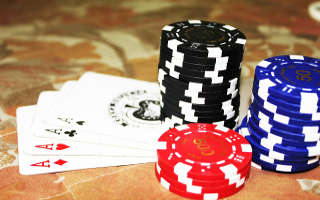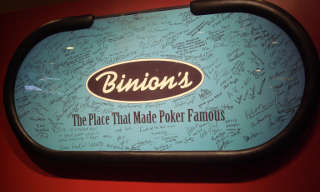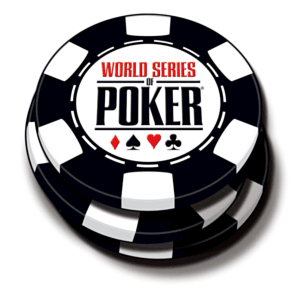Poker Tournaments: The Ins And Outs

As an avid poker player I often wondered how a poker tournament is structured. In this article I’m going to go under the hood, hopefully at the end of it you’ll know more about the technical aspects of it.
What Are Poker Tournaments?
A poker tournament is a competition where players get to compete against each other for a prize. Competing in tournaments is an increasingly popular way to play poker. Each year more and more tournaments are added to the global poker tour. Players get to win large cash prizes for a relatively small entrance fee. The more prestigious the poker event, the more skilled players it attracts. Less skilled players can hone their skills by playing tournaments with lower stake levels.
Tournaments can be played at casinos, card rooms and over the Internet. Casinos tend to host tournaments at off-peak times. There are tournaments that cater for a variety of poker games such as Texas Hold’em, seven-card stud and Omaha. Texas Hold’em is the most popular tournament game since it decides the World Series of Poker Champion.
Tournaments allow players to test their skill against other players. Several thousand players are attracted to the major tournaments. Suffice it to say this is where the big money is and a great opportunity for players to test their skill against the best. One of the great advantages of a poker tournament is that it’s a cheaper way of playing than regular casino play, particular in the minor events. You also encounter players of various levels from novice to highly skilled.
To become successful in a poker tournament you must have stamina and concentration. See it more as a marathon as opposed to a sprint. Unlike conventional games where you can quit while you’re ahead, in a tournament you are there for the duration. A typical tournament can last up to 14 hours a day. There are breaks but they are short, an hour for lunch and 10 minute breaks every 1.5 to 2 hours. Let’s take the World Series of Poker (WSOP) for example, most events last up to two days. Play starts at noon on the first day and continues until the players win their place at the final table. On the second day the finalists start playing at 4pm, play continues until someone wins.

Various Tournaments
There are two main types of tournaments: freeze-out or no re-buy tournaments and re-buy tournaments. In both types of games players are eliminated when they lose all their chips.
A freeze out tournament (no re-buy) is where the player receives the same amount of chips. They pay an entry fee of $50 which equals 500 chips. Until the end of the game they play this fixed amount of chips. They are not allowed to purchase additional chips if they run out. If a player loses all his chips he is eliminated. If there’s a time limit, the player with the most chips is the winner at the end of the competition. In other tournaments play may continue until there’s one winner at the table. The winner then gets to compete in the next round.
Depending on the amount of players, there might be several rounds where players are eliminated gradually. Breaks are allotted to allow players some time to rest and to eat. After each round of play, seats are reallocated for the next level. This might be by a further draw or where the finalist of player 1 plays against the finalist of table 2.
Re-Buy Tournaments
In this type of tournament players are allowed to buy extra chips at set points within the game. The amount of re-buys is usually the same as the initial buy-in. In some tournaments re-buying of chips can be unlimited whilst others have limits. The rules can stipulate that two further re-buys are allowed. Play only stops until players have no more chips or where the player with the most chips is declared the winner.
Progressive Stack Re-Buy Tournaments
In progressive stack re-buy games the cost of the re-buy is constant. The further you are into the re-buy period the more chips you’ll receive. Basically the value of the chips decreases as the game continues.
No Pot and Pot Limit
There are two terms that refer to the bet sizes. They are pot limit and no pot limit. A pot limit is where the size of the bets can be any amount between that of the big blind (initial bet in Texas Hold’em) and the total pot. A no pot limit bets can be any amount between the value of the big blind and the value of a player’s remaining chips.
Fees
The cost for entering a tournament consists of the buy-in, re-buys and the entry fee. The minimum buy-ins normally start at $15 to $20 where cash prizes of several hundred dollars could be won. On the other hand buy-ins for major tournaments can be as much as $10,000 where the cash prize is $1,5 million. The casino keeps the entry fee since it covers the cost for the tournament’s hosting. An entry fee is typically ten percent of the buy-in.
To determine the tournament’s overall cost, you must total the buy-in cost, cost of the re-buys as well as the entry fee. If the tournament’s advertised a buy-in of $1,000 and an entry fee of $100, it costs $1,100 in total. A tournament advertised with a buy-in fee of $500 and a $50 entry fee with two re-buys of $500 would cost $1550, that’s if your participate in all the buy-ins.
Entry Requirements
If you want to play in a tournament you must fill in a registration form. You may be asked to verify your age and provide proof of identity. To participate you must be over the minimum age. Obviously this also depends on the local gambling legislation. Many tournaments are often oversubscribed that’s why it’s important to register early. At the registration point you pay the amount of the buy-in. If you pay the buy-in by check, ensure that you register early enough for the check to clear.
There are specific entry requirements for major tournaments. Players may be required to provide evidence if they’ve won a poker tournament before. Alternatively to gain entry into the main event you’ll have to play a qualifying competition. Many tournaments now have separate tournaments for female players.
How A Poker Tournament Is Organized

When advertising a tournament, the organizers must state the entry fee, buy-in, the value and the number of re-buys. The rules must be available and must indicate when play is scheduled and how long it will last. The seats are allocated by holding a random draw. Players take up their seats when they’re directed to do so. The chances of players colluding are reduced since a random draw decides where each player sits. Before play starts it’s etiquette to arrive a half an hour before the time. If you fail to arrive on time your seat will be allocated to another player or you may be disqualified.
The casino provides a dealer which controls each game. The dealer’s responsibility is not only to enforce the rules, deal the cards but to check if the correct players are seated at the table. The dealer then gives the players their chips. To ensure that the game is fairly played other casino staff will keep a close eye. Each tournament has its own set of rules. Players are not allowed to chat to other players, ask for advice or to lend or borrow chips. If a player runs out of chips the all-in rule applies. The game is closely watched for possible cheats. If caught the player will be disqualified immediately. Games are video taped and will be played back in case there’s a dispute.
Prizes
Once a poker tournament ends there’s a short ceremony to present the prizes. Mostly they are paid out in cash. In some tournaments the prize can be an entry fee to a major poker tournament. Besides only issuing a prize to the winner, the runners-up also receive prizes. The cash prize of a tournament largely depends on the amount of players. Tournaments that allow re-buys, the value of the re-buys contribute toward the prize money. The casino will often make a deduction for the rake (charge for playing). The winning player receives the bulk of the cash prize.
What’s A Satellite Poker Tournament?
A satellite tournament allows a player to win a stake so that he or she can compete in a major tournament. The minimum stake in a major tournament could be as high as $10,000. Whereas a satellite may be organized for 10 players with a buy-in fee of $1,000 each. The winner receives all the stake money that is $10,000, enough to enter the main event.
Players can even enter a super-satellite for a smaller stake. If they win they will receive entry to the main event. However, in super-satellites there’s also more competition, players will have to play several levels before they can reach the main event. In the World Series of Poker for example, the super-satellites cost $250 which enable players to win the much needed $10,000. This is how much it costs to enter this major competition.
UK Poker Tournament Rules
In the United Kingdom, the Gaming Board is responsible for setting up guidelines for the running of card room competitions. Details for the fees, rules, names and stakes must be clearly displayed in the card room. Players must receive a receipt for entry stakes, registration fees and re-buys. Every single stake, re-buys must be returned to the winning players as prize money. It’s up to the casino if they want to add additional cash to the prize money.
In addition to the entry stake a competition fee may be charged. It must not be greater than ten percent of the entry stake and not more than $60. Winners may sign a receipt for their prize. Re-buys are only allowed when the value of the player’s chips reaches fifty percent of the chip value issued in exchange for the original stake.
Major Tournaments

I’m not going to discuss each and everyone poker tournament just the most important ones. The World Series of Poker (WSOP) is without a doubt the biggest and longest running tournament in the world. It attracts the best poker players from around the globe. In May every year it is held at the Binion Horseshoe Casino in Las Vegas. Over a period of 30 days a variety of tournaments are held.
Most games take place over two days, with play lasting up to 14 hours a day. Single table satellites are held 24 hours a day with buy-ins ranging from $170 to $1015. Super satellites start at $220. The action start with a no-limit Texas Hold’em tournament that’s decided over four days. The entry fee to the WSOP is $10,000 and the total prize money is $1,5 million. The winner’s name is entered into the Poker Hall of Fame.
Jack Binion World Open
This tournament is modeled on the WSOP. It takes place at Binion Horseshoe and Gold Strike casinos in Tunica. It’s held in March and April every year. The buy-ins starts at $330 rising up to $5100 for the main event, which is a no-limit Texas Hold’em tournament. Over 3,000 players enter the tournament. Satellites and super satellites have buy-ins of $120 allow players to win an entrance fee into the main event.
World Heads-Up Poker Championship
This tournament is held every year in may and June at the prestigious Concord Card casino in Vienna, Austria. The casino has Europe’s largest card room with 30 tables and a tournament room with 20 tables. Poker is played 24 hours a day. The main even is a no-limit Hold’em with a total cash prize of $700,000. A seat to the main draw will cost you $2,300. The winner walks away with $280,000.
Conclusion
Before you enter a poker tournament you must have a financial budget. Calculate all your household and living costs including savings. Work out how much cash you can afford to lose. Gambling is risky business, not everyone wins and there are plenty of losers. Once you decided to enter a tournament don’t go over your budget. I trust that you’ve enjoyed reading this article as much as I have writing it.
Additional Sources
1. Cardplayer.com-http://www.cardplayer.com/poker-tournaments
2. Pokerlistings.com-http://www.pokerlistings.com/poker-tournaments
[addtoany]
0 Comments
Be the first to comment